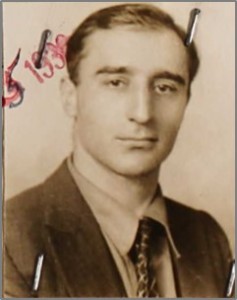“We Couldn’t Believe It…” by George Kaye, Machine gun Co. 58th Battalion
“We Couldn’t Believe It…” by George Kaye, Machine gun Co. 58th Battalion
The Volunteer for Liberty v. 2, No. 33, October 6, 1938.
Hill 666 means several things to us of the Lincolns –eight hours of unadulterated hell, for one thing. As a result of our defense of that position our Battalion was honored by a special citation. And there we lost one of our oldest, most beloved, and most competent leaders – Joe Bianca of the Machine Gun Company. He died as he had lived, fighting in the heat of the class struggle.
From the day he went to sea in 1924 (at the age of 19), Joe’s life was inextricably bound up with the maritime industry. He learned very early the nature of exploitation and as was characteristic of Joe, he carried his ideas to their logical conclusion; agitating his fellow workers in the spirit of progressive trade unionism. The work he undertook, in collaboration with other pioneer workers of the maritime trades like ‘Red’ Drummond, Harry Hynes, Al Kaufman and Tommy Ray*, helped to lay the basis for the powerful National Maritime Union that we know today.
From 1926 to 1929 Joe traveled from port to port, from ship to ship, educating and organizing his brother workers. With these other seaman, he organized International Seaman’s Clubs, as organs to spread the message of militant industrial unionism. And as a result of his experiences he decided that the struggle for immediate demands on the economic field was not sufficient to attain permanent security for the working class. He decided that what was necessary was a complete reorganization that knew what it wanted and would go out and get it. Acting on this decision Joe became a member of the Communist Party in 1927, and it was not long before he was one of its strongest proletarian pillars and one of its best builders.
When the International Seamen’s Club outlived their usefulness the Maritime Workers League was formed as a transitional step toward full-fledged unionism, and by now the work of Joe and his comrades was bearing fruit. Illusions of permanent prosperity had been swiftly dissipated by the crash of 1929. In 1931 the Marine Workers league transformed itself into the Marine Workers Industrial Union (MWIU), and so was elected to its National Bureau. Working with Roy Hudson and other seamen leaders, he resumed his travels from port to port, organizing the workers into the new militant organization. There were no funds to support even the top officers of the new outfit, and Joe had to wonder constantly where his next meal and flop were coming from. There were times when he didn’t have the price of a cup of coffee and had to sleep on the floor of the union hall.
Joe’s influence for progressive actions was being felt, and in 1932 he was sent as M. W. I. U. delegate to the congress of the International of Seaman and Harbor Workers in Hamburg. And when the M. W. I. U. merged with the International Seamen’s Union. Joe too a leading part in fighting Scharrenberg, the reactionary stooge of the ship-owners. Then came the west coast strike of 1935, and the west coast strike of 1937, where Joe’s fighting qualities found outlet in the struggle against the owners and the forces under Harry Lundenberg. Trotskyite tool in the Sailor’s Union of the Pacific.
From America’s west coast to the shores of Spain was just a hop, skip and a jump for Joe. He arrived here in June of 1937 and found himself a leading spirit in the “Seaman’s Section” of the Machine Gun Company. On August 7th he joined the Lincoln-Washington Battalion together with other replacements, and from that moment until the moment of his death he was an acknowledged leader of the men. It was during this year of ceaseless action that we all learned to love and respect this hard and fearless man, who’s most outstanding characteristic was his sound common sense. Through Quinto and Belchite, on to Fuentes de Ebro and the Levante Joe was always there, giving advice, helping out, sending no one to any place he would not go himself.
The “Big Retreat” started and Joe devoted every moment to the section he commanded. Miraculously escaping death, a dozen times, he led his men – men who obeyed every command and trusted their tried and experienced leader. From Caspe he was sent to rest in Valls, and the Batea-Gandesa action took place while he was on leave. But he rushed back to the front and contacted the Battalion on the east coast of the Ebro immediately launching into the work of reorganization. He was Mike Pappas right-hand man, and greatly through his efforts our Company was in fighting trim when marching orders came. In the days of action that followed the crossing of the Ebro he played the role that was always expected of him – he was here there, and everywhere, placing the guns, directing the fire.
Then the unexpected happened; something happened that we were beginning to believe was impossible. Never have I seen men so shocked as our men were when they were told that Joe was dead. We had come to believe Joe would never get it. We couldn’t believe it for a while, but when the fact had to be accepted there was one thought in the minds of all the men:
“There died a swell guy; one of the best this Brigade has ever seen.”
——
*Tommy Ray was the Secretary of the National Maritime Union (NMU).














